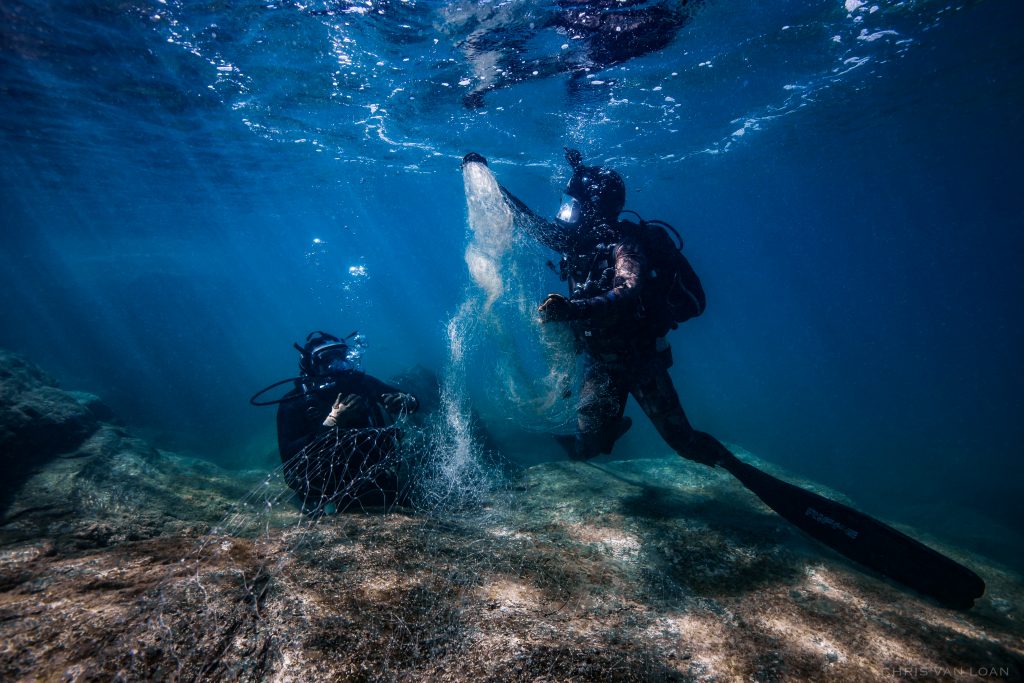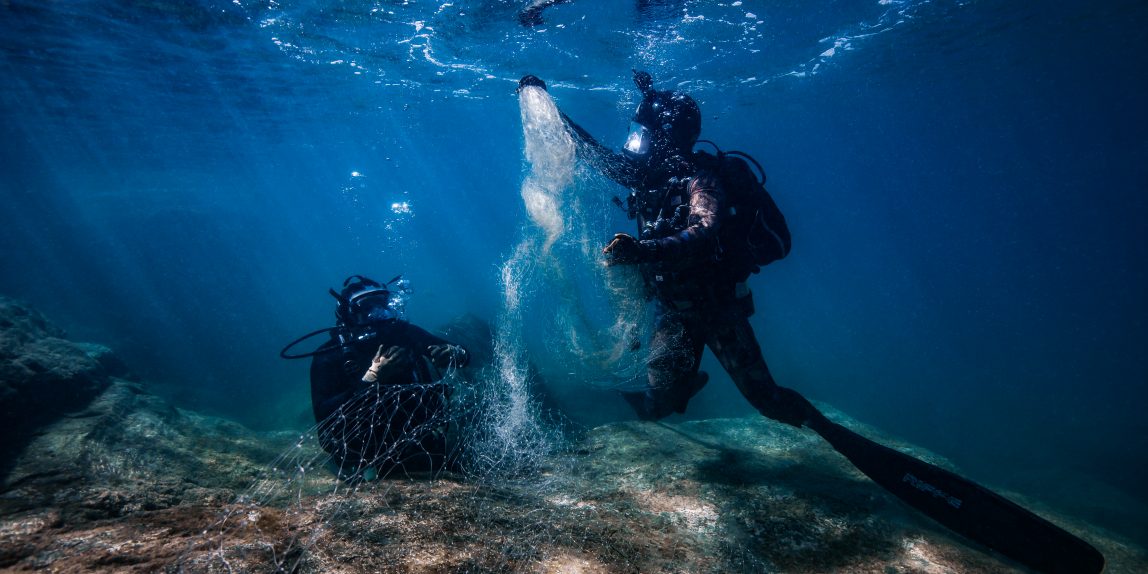National Geographic Photo of the Day September 25 2018
National Geographic selected my image to share as the photo of the day. In the photo, our small volunteer unfunded (Prometheus Design Werx) PDW dive team is clearing poacher’s abandoned nets from remote volcanic islands in the Sea of Cortez.
Remote Scuba Anti Poaching Expedition
The nets we are removing in the photo are intended to catch the endangered totoaba fish. They end up killing other sea life. We found dead sea turtles and seals in a net we removed earlier. The dive bladder organ of the totoaba is worth thousands of dollars on the black market, typically in Chinese traditional medicine.
Financial incentives are so lucrative that poaching has become organized, with cartels ultimatly taking over. The increased pressure of military check points throughout Baja state limiting flow of black market items, this is an operation they can execute with much less risk and more profit than cocaine. The rampant over-fishing in the Gulf of California is driving several species towards extinction, including the world smallest whale, the Vaquita. This issue has been brought to light in the film Dark Waters.
Our work with the Mexican Government sponsored initiatives aimed at protecting wildlife and boats from trash nets among other scientific research expeditions starting in 2014. After a few years of underwater campaigns in the area, we were warned by the local cartel that any continued operations would put our lives at risk.
Shooting Photos in the Water
For this image I used a canon 5D MK4 with a Canon 16-35L lens, and Aqua Tech Housing. I had strobes on articulating arms also available but were not used.
Lenses
For this part of the shoot, I used the canon 16-35L F/2.8. I have tried the super wide angle 10-15mm in the water, as well, and find for shooting people in shallower water where there is more available light, I prefer the compression of the 16-35L F/2.8. For general photography in the water, the super wide and ‘fish eye’ lenses are easy to work with and often produce relatively flat perspective when shot through the water and the lens dome, as well as the fantom focal point that is produced shooting in the water. Fish eye lenses also typically come with more depth of field natively making hard focus shots more likely to turn out.
The Aqua Tech housing was rented from Back Scatter in Monterey, which I’ve found to be an excellent organization. The learning curve with a housing takes a while. All of the buttons of your camera are relocated and unlabeled. Some are converted to levers and dials. Once I was used to the button layout by feel alone it was not a challenge to shoot with in the water.

View it at Nat Geo Here
It is an honor to be recognized and share our work with the world through National Geographic.
Info on all the equipment worn by the divers on the PDW dive team, including the radio communications masks from Ocean Technology Systems, Shearwater Dive Computers, Zeagle Ranger vests, Riffe fins, and more is available linked in my-
Amazon store here, Talus by Chris Van Loan
Or click on any of the images below to link directly
